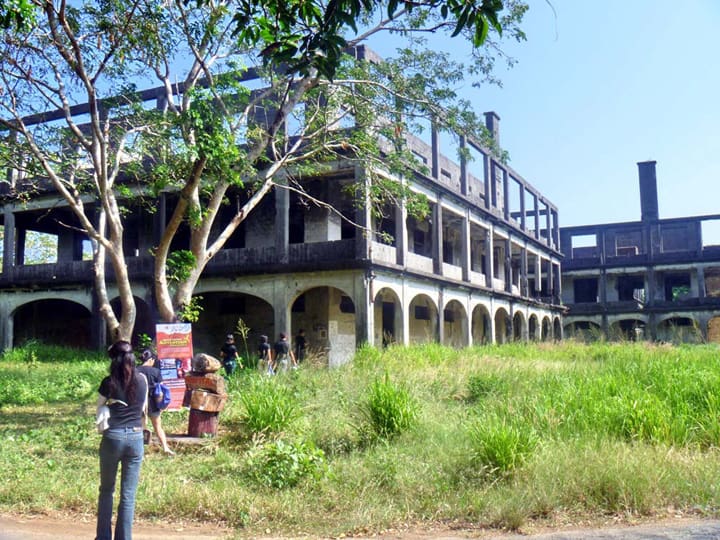
When one mentions Corregidor, what comes to mind is the heroic defense of the 11,000 Fil-American troops on the island against the Japanese invaders after the Fall of Bataan on April 9, 1942. After a month, on May 6, the island itself capitulated. Now, on the 79th anniversary of the fall of the island, let’s find out about some relatively unknown facts about the island fortress of Corregidor and its adjoining islands.
For one, the exact derivation of the island’s name is unknown. Some say it was derived from the Spanish name for “corrector” (one who checks and corrects papers of incoming ships) while others say it was from the Spanish word corregidor (the man who heads the corregimiento or unpacified military zone).

Two facts are full of irony. First, the cement for concrete used to line the 30 to 40 ft thick walls of Malinta Tunnel (an 836-ft long, fishbone-shaped system of bombproof tunnels) was, ironically, Asada cement bought from the Japanese. Second, though Corregidor and the adjoining islands bristled with 56 coastal guns and mortars in 23 seacoast batteries, most were useless during the siege as they used armor-piercing ammunition (for use against naval targets) instead of the more effective anti-personnel type and, although capable of all around traverse, were ineffective for use against targets on Bataan.
Only the eight 12-inch mortars of Battery Geary and the four 12-inch mortars of Way proved to be the best and most effective for the defense of Corregidor during the Japanese siege. Speaking of batteries, Corregidor armament included “disappearing” gun batteries (Battery Crockett and Cheney, two 12” seacoast guns each; Battery Grubbs, two 10” guns). These disappearing guns, mounted on a “disappearing carriage,” enabled a gun to hide from direct fire and observation.

Did you know that the Philippine Institute of Volcanology and Seismology (PHIVOLCS) still classifies Corregidor and Caballo islands as a potentially active volcano? According to the PHIVOLCS, the two islands are believed to be the exposed rim of a volcano that form part of a potentially active volcanic caldera (called the Corregidor Caldera), though it has no known eruptions in the Holocene Period (around 10,000 years ago) and its last eruption was about 1 million years, based on the age of deposits.
Not many know that the Malinta Tunnel, the headquarters of Gen. Douglas MacArthur and temporary home of the Philippine Commonwealth government, was bored out of Malinta Hill using “forced labor” in the form of 1,000 convicts from the Old Bilibid Prison in Manila, most of which were serving life sentences. The Philippine Commonwealth offered them as equity in the construction of the Malinta Tunnel Project.

You think Corregidor is part of Bataan? Think again. Though much nearer geographically (it is 3 nautical miles away with 30 minutes travel time from Brgy. Cabcaben) and historically to Mariveles (Bataan), it belongs to Cavite, being under the territorial jurisdiction and administrative management of Cavite City. When you are on the island you can see more of Bataan than Cavite City.
Here’s one for Ripley’s. The 880-m (1,520-ft.) long, three-story high and hurricane-proof “Mile Long” Barracks, though less than a third of a mile long, is reputedly the world’s longest military barracks. It housed 8,000 men and the headquarters of Gen. Douglas MacArthur. And did you know that the flagpole where the American flag was lowered during the 1942 surrender to the Japanese and raised during the March 2, 1945 liberation is actually a mast of a Spanish warship? It came from the Reina Cristina which was captured by Admiral George Dewey after the May 1, 1898 Battle of Manila Bay and put up in Corregidor. The American flag was lowered for the last time on October 12, 1947 and the Philippine flag hoisted in its stead.

Fort Drum, the “Concrete Battleship,” located on the former small, rocky El Fraile Island, 7 miles southeast of Corregidor, must be unprecedented in the history of military fortifications. This heavily fortified 240-ft long, 160-ft. wide and 40-ft high citadel, bristling with 11 guns (including two batteries with rotating turrets with two 14” guns), was built from 1909 to 1919 by the US Army Corps of Engineers who flattened the island and reconstructed it to resemble the forepart of a battleship, with one end flat and the other shaped like a prow.

Last, an infamous incident on the island spurred a rebellion in the Muslim south, one that lingers to this day. In 1968, a ragtag group of Muslim soldiers was training in Corregidor for a planned invasion of Sabah in Malaysia. When the soldiers found out what they were there for, they refused to do their duty, as many of them had relatives in Sabah, and the rest were understandably reluctant to slaughter fellow Muslims. A decision was made, from the top brass, to exterminate them. Under the pretense of taking them home, groups of 12 soldiers were led to Kindley air strip where they were machine-gunned. All were killed except one Jibin Arula, who jumped off a cliff into the sea and, several hours later, was picked up by fishermen. He later told the story of the infamous Jabidah Massacre. The soldiers’ graffiti could still be seen in the island’s hospital ruins where they stayed in.
Article and Photo originally posted by Business Mirror last May 15, 2021 and written by Benjamin Layug.







More Stories
Weekend wanderer: This walk in Manila is a trip to art and to our past
Enjoy no-frills camping in the great outdoors in Tanay
Landco Pacific raises the bar for premium resort and leisure living